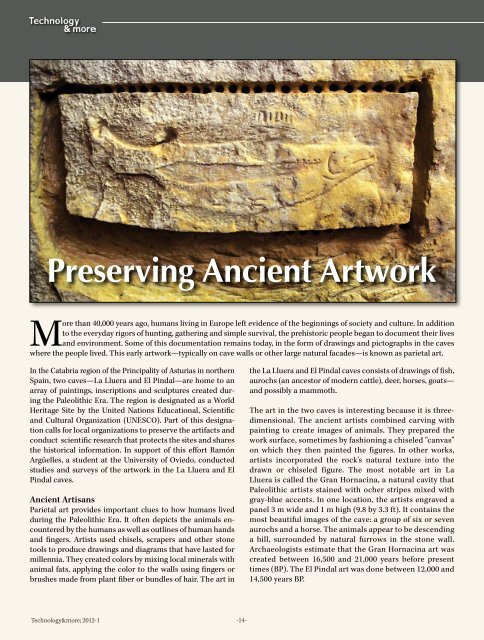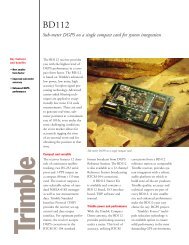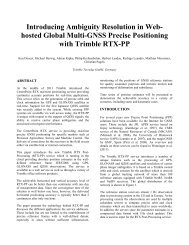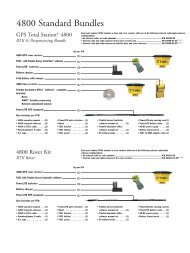Cal Stadium Renovation - Trimble
Cal Stadium Renovation - Trimble
Cal Stadium Renovation - Trimble
Create successful ePaper yourself
Turn your PDF publications into a flip-book with our unique Google optimized e-Paper software.
Preserving Ancient Artwork<br />
More than 40,000 years ago, humans living in Europe left evidence of the beginnings of society and culture. In addition<br />
to the everyday rigors of hunting, gathering and simple survival, the prehistoric people began to document their lives<br />
and environment. Some of this documentation remains today, in the form of drawings and pictographs in the caves<br />
where the people lived. This early artwork—typically on cave walls or other large natural facades—is known as parietal art.<br />
In the Catabria region of the Principality of Asturias in northern<br />
Spain, two caves—La Lluera and El Pindal—are home to an<br />
array of paintings, inscriptions and sculptures created during<br />
the Paleolithic Era. The region is designated as a World<br />
Heritage Site by the United Nations Educational, Scientific<br />
and Cultural Organization (UNESCO). Part of this designation<br />
calls for local organizations to preserve the artifacts and<br />
conduct scientific research that protects the sites and shares<br />
the historical information. In support of this effort Ramón<br />
Argüelles, a student at the University of Oviedo, conducted<br />
studies and surveys of the artwork in the La Lluera and El<br />
Pindal caves.<br />
Ancient Artisans<br />
Parietal art provides important clues to how humans lived<br />
during the Paleolithic Era. It often depicts the animals encountered<br />
by the humans as well as outlines of human hands<br />
and fingers. Artists used chisels, scrapers and other stone<br />
tools to produce drawings and diagrams that have lasted for<br />
millennia. They created colors by mixing local minerals with<br />
animal fats, applying the color to the walls using fingers or<br />
brushes made from plant fiber or bundles of hair. The art in<br />
Technology&more; 2012-1<br />
-14-<br />
the La Lluera and El Pindal caves consists of drawings of fish,<br />
aurochs (an ancestor of modern cattle), deer, horses, goats—<br />
and possibly a mammoth.<br />
The art in the two caves is interesting because it is threedimensional.<br />
The ancient artists combined carving with<br />
painting to create images of animals. They prepared the<br />
work surface, sometimes by fashioning a chiseled “canvas”<br />
on which they then painted the figures. In other works,<br />
artists incorporated the rock’s natural texture into the<br />
drawn or chiseled figure. The most notable art in La<br />
Lluera is called the Gran Hornacina, a natural cavity that<br />
Paleolithic artists stained with ocher stripes mixed with<br />
gray-blue accents. In one location, the artists engraved a<br />
panel 3 m wide and 1 m high (9.8 by 3.3 ft). It contains the<br />
most beautiful images of the cave: a group of six or seven<br />
aurochs and a horse. The animals appear to be descending<br />
a hill, surrounded by natural furrows in the stone wall.<br />
Archaeologists estimate that the Gran Hornacina art was<br />
created between 16,500 and 21,000 years before present<br />
times (BP). The El Pindal art was done between 12,000 and<br />
14,500 years BP.














